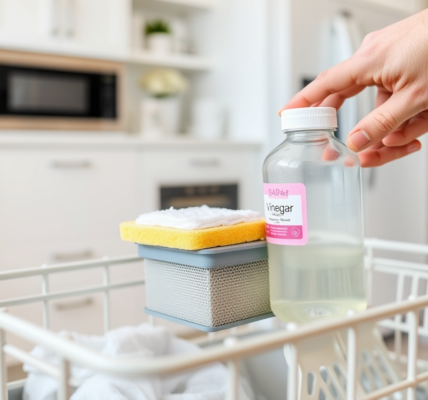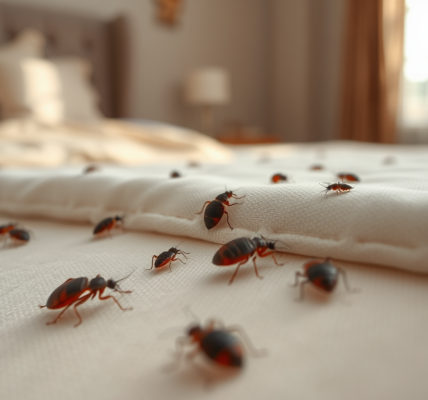Gardening enthusiasts often seek the satisfaction of cultivating their greens and blooms directly from the very genesis of plant life – the seed. By preparing seeds from fresh fruit for planting, we not only engage in a sustainable practice but also ensure a closer connection to our gardens. The process involves selecting the right fruit, extracting viable seeds, and preparing them correctly for germination. For those wondering can you grow passion fruit from seeds, the answer is a resounding yes, with the added reward of watching a unique vine develop and eventually bear fruit.
Selecting Your Fruit
Identifying Seed-Bearing Fruit
The initial step towards a thriving plant is choosing the right fruit from which to harvest seeds. High-quality, fully ripe, and disease-free fruits are the prime candidates for seed extraction. Here’s a brief list of criteria for seed selection:
- Opt for organically grown fruits whenever possible to avoid the potential for seeds that have been treated with growth inhibitors.
- Select fruits at the peak of ripeness, as they contain seeds that have reached maximum maturity.
For exotic fruits like passion fruit, which is often inquired about—how long does it take for passion fruit to bear fruit—it’s important to know that from seed to fruit-bearing, it can take anywhere from 1 to 3 years, depending on the growing conditions and climate.
Best Seasons for Harvesting Seeds
Timing is a crucial element in the process of harvesting seeds. For tropical fruits such as passion fruit, it’s essential to harvest the seeds at a time when they can be immediately planted, due to their fast-losing viability. The best seasons vary, but as a general rule, it’s typically late summer through fall for most fruits:
- Stone fruits like peaches and cherries fare best when harvested in late summer.
- Citrus fruits, on the other hand, often have mature seeds ready by mid to late winter.
Keep an eye on the fruit’s natural ripening time in your region to collect the seeds at the peak time for planting success. For alternative methods, gardeners may also explore how to grow passion fruit from cuttings, which can sometimes yield faster results than seeds.

Extracting the Seeds
Techniques for Seed Extraction
Once you have selected the optimal fruit, the extraction process begins. The process may vary slightly depending on the type of fruit, but here is a universal method:
- Cut the fruit open to expose the seeds.
- Gently scoop or squeeze out the seeds and remove any attached pulp.
In regards to passion fruit, among the common questions is what to do with passion fruit seeds once extracted. They can be prepared for planting almost immediately, as their germination rate is higher when fresh. For fruits with small seeds, such as kiwis or figs, you can use a sieve to separate the tiny seeds from the flesh. Larger seeds, like those from avocados or mangoes, require a bit more finessing to release them from the core or pit.
Cleaning the Seeds
Properly cleaning the seeds is a vital step to prevent fungus and rot during the drying and storing phases. To ensure the seeds are well cleaned, such as the seeds of passion fruit which can be particularly slimy, follow this straightforward process:
- Place the extracted seeds in a fine mesh strainer and wash under running water.
- Gently rub the seeds against the mesh to help remove the pulp.
Once thoroughly cleaned, spread the seeds out on a paper towel or a clean cloth, which is particularly important for seeds like passion fruit that have a gelatinous coating. A precaution to note is to avoid using harsh detergents or chemicals during the cleaning process, as they can damage the seeds or leave harmful residues.
Preparing for Germination
The Drying Process
After the seeds have been cleaned, drying them is fundamental before storage or planting. How to plant passion fruit seeds begins with the careful drying of these seeds for about 1-2 weeks in a warm, well-ventilated space out of direct sunlight. Make sure to turn the seeds periodically to ensure even drying. A desiccant, such as silica gel, can also be used to remove excess moisture efficiently.
Testing Seed Viability
Not all seeds will be viable for planting, and there is a simple test that can help determine which seeds have the potential to grow:
- Place seeds in a glass of water.
- Viable seeds will typically sink, while non-viable seeds will float.
However, this test is not foolproof, and some viable seeds may also float due to trapped air or other factors. It’s best used as a preliminary assessment, not a definitive measure of viability.

Storage and Labeling
Tips for Storing Seeds
Once the seeds are dry, proper storage is essential to maintain their viability until planting time. Here are several techniques for effective seed storage:
- Use paper envelopes or cloth bags to store dry seeds, as these materials allow for air circulation.
- Label each container with the date of collection and the fruit type.
Avoid storing seeds in plastic bags or containers that can trap moisture and lead to mold growth. An ideal storage location would be a cool, dry place away from direct sunlight—think a pantry or a drawer in an air-conditioned room.
Importance of Labeling
When saving seeds from your homegrown or locally-sourced fruits, labeling becomes an informative tool. A proper label should include not just the name of the plant, but also additional details such as:
- Date of harvest
- Fruit type and variety
- Specific notes on the fruit’s characteristics (taste, color, size, etc.)
Creating a table for record-keeping will help you organize and sort through your seeds when it’s time for planting:
| Date of Harvest | Fruit Type | Variety | Notes |
|---|---|---|---|
| August 20, 2023 | Tomato | Heirloom Brandywine | Sweet, large fruit |
| September 10, 2023 | Pepper | Jalapeno | Moderate heat, good for pickling |
| October 15, 2023 | Passion Fruit | Purple Possum | Perfect for eating fresh or juicing |
Recording such information will provide valuable insights over time, aiding in selecting the most desirable traits for future planting endeavors. The inclusion of when and how to plant passion fruit seeds in your notes will be an invaluable guideline for your next growing season.
Planting Your Seeds
Soil and Environment
Choosing the right soil and creating an appropriate environment is critical for the successful germination and growth of your seeds. Passion fruit seeds, as an example, require a well-draining, rich soil to thrive. Creating the ideal soil mix involves:
- Combining two parts garden soil with one part compost or well-rotted manure to provide nutrients.
- Adding an equal part of sand or perlite to ensure good drainage, crucial for preventing root rot.
The environment also influences the growth. For passion fruit vines, a supporting structure is necessary, as they will climb and spread rapidly. Ensuring your plants have enough space and the right support will set them up for healthy development.
The Planting Process
The act of planting your carefully prepared seeds is the culmination of your hard work. Here’s how to approach this final step:
- Sow passion fruit seeds at a depth of about 1/2 inch in the prepared soil mix.
- Water the soil gently to moisten it without dislodging the seeds.
Maintain a consistent moisture level in the soil but avoid overwatering. Covering with a thin layer of mulch can help retain moisture and regulate soil temperature. Keep in mind that while patience is key, the joy of seeing the first sprouts emerge is a delightful reward for your efforts.

Conclusion
Embarking on the journey of harvesting seeds from fresh fruits and nurturing them into flourishing plants is a rewarding endeavor that deepens your connection with the earth. From the selection of ripe fruit to the final planting, each step is an investment in the future of your garden. Recall the patience required when pondering about how long it takes for passion fruit to bear fruit and relish in the process from seed to harvest. With dedication and care, your cultivation efforts will bloom into a lush garden oasis teeming with life.
FAQs
- How long does it take for passion fruit to bear fruit after planting? Typically, passion fruit vines will start bearing fruit 1 to 3 years after planting, depending on the growing conditions.
- Can any fresh fruit seed be prepared for planting? Most seeds from fresh, fully ripe fruit can be prepared for planting, although some tropical fruits have a short viability window and should be planted soon after extraction.
- How to grow passion fruit from cuttings? To grow passion fruit from cuttings, you’ll need healthy, non-woody stems from a mature vine. Cuttings should be about a foot long, dipped in rooting hormone, and then planted in a pot with moistened potting mix. Keep them in bright, indirect light and maintain moisture until roots develop.
- What is the best soil mixture for planting passion fruit seeds? A mixture of two parts garden soil, one part compost or well-rotted manure, and one part sand or perlite is ideal for passion fruit seed planting.
- What should you do with passion fruit seeds before planting them? Passion fruit seeds should be cleaned, dried, and, ideally, planted soon after extraction to ensure the best germination rate. If you must store them, place the dried seeds in a paper envelope in a cool, dry location until ready to plant.










